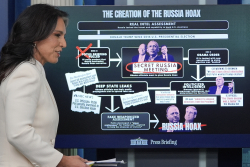There’s an old Catholic axiom: If you need good preaching, find a Dominican. If you need to choose the Dominican, ask a Jesuit. Don’t bother asking the Carmelites—they’re too busy praying.
St. Ignatius of Loyola is best known for his Spiritual Exercises, a structured method of prayer and discernment that has formed countless saints and seekers.
In his manual, Ignatius outlines the “nuts and bolts” of his method: specific Scripture passages for contemplation, 14 Rules for the Discernment of Spirits, and pastoral insights drawn from the lived experience of serious prayer. Of particular note is the 19th Annotation, a version of the Exercises designed for those “in the world.” This extended retreat-in-daily-life unfolds over roughly nine months, integrated into the rhythms of work, family, and lay vocation.
It was during my first experience with the 19th Annotation that my spiritual life was shattered—and then remade.
Many Catholics have heard of the Examen or know a few rules for discernment, but in my experience, the Exercises are often misunderstood—and therefore misused. At some point, they came to be seen mainly as a tool for vocational discernment. If you weren’t sure about your calling, the advice was often: Ask the Jesuits.
That’s not wrong. The Jesuits are masters of nuance, and their gifts for spiritual accompaniment are unparalleled. Apart from a booming voice from heaven, the Exercises may be the best way to discern a vocation.
But they are so much more than that.
When I began the 19th Annotation, I wasn’t discerning the priesthood or the diaconate. I was married, with children. I wasn’t seeking direction. I was seeking Jesus.
Following a dramatic reversion to the Faith, I was devouring anything I could find on prayer and the interior life. I stumbled upon Fr. Kevin O’Brien’s The Ignatian Adventure, and the book jacket sounded like exactly what I needed: nine months of structured, Scripture-based prayer. I didn’t know what I was getting into. But I had a deep love for the Jesuits and a restlessness in my soul that I couldn’t ignore.
At the time, the Church was emphasizing the theme of Encounter. That word hit me hard. For all the hours I had spent reading Scripture, praying, and exploring Evangelical communities, I couldn’t honestly say I had met Jesus, not in the way the Church meant.
Fueled by a convert’s zeal, a touch of ADHD, and a sincere hunger for God, I gave the Exercises everything I had.
And by God’s grace—and Ignatius’s intercession—I had my encounter.
It wasn’t a burning bush. There was no theophany, no booming voice, no fire. I didn’t even get my feet wet. The Exercises are not designed to deliver Jesus like a freight train.
You meet Him in stages, in silence. At His birth. At the well. On the road. You imagine yourself as the leper, the blind man, the one He calls by name. Over time, you develop a relationship with the Person of Christ—the same way any other relationship forms: through intentional, sustained presence.
And one day, without knowing quite how it happened, you realize: Jesus is real. I know Him.
What Ignatius doesn’t prepare you for is the devastation of seeing your friend, your Lord, suffer His Passion with new eyes. The Gospel can no longer remain a story. It becomes yours. In the Exercises, the invitation is always the same: accompany Jesus. Be with Him, especially in His suffering.
There are tender, even joyful moments throughout the Life of Christ in the Exercises. But standing at the foot of the Cross with the one you love will wreck everything you thought you knew about God, theology, and faith.
The Exercises didn’t shape my faith. They formed it as a potter forms clay.
Before the 19th Annotation, I knew who Jesus Christ was. After nine months of prayer, I would say then—and still say now—that He is more real to me than my wife or kids.
That’s why I chose St. Ignatius as my Confirmation saint. He became my spiritual father because he introduced me to the Father’s Son. And now I echo Peter:
Lord, to whom shall we go? You have the words of eternal life; and we have believed, and come to know, that you are the Holy One of God. (Jn. 6:68)
The Exercises are not easy.
The 19th Annotation requires serious commitment. Daily prayer becomes a discipline—at minimum 45 minutes, but ideally closer to 60–75. The introductory phase, the Foundations, will confront you with God’s lavish, unearned love and dredge up everything in you that resists it. You may feel, as I did, like the Grinch: your too-small heart cracking open as grace rushes in.
The Exercises are spiritual bootcamp: intense yet practical, gentle yet overwhelming. They will give you tools you’ll use for the rest of your life. And like bootcamp, people may not recognize you afterward.
We all know the world needs Jesus. But many people in our pews still need to meet Him.
When I share my experience, even cradle Catholics sometimes look puzzled—or concerned. The most common response I get is: “I didn’t know you were discerning the diaconate!”
I’m a disciple of Jesus, but I’m also a son of Ignatius.
And I want people to know: the Spiritual Exercises are not just for vocational discernment. They could be the key to unlocking everything the Church has ever promised.
On this Feast of St. Ignatius, I raise my spirit in thanksgiving for the soldier-saint from Loyola and the God who inspired him to give us one of the most powerful means of encountering Jesus Christ.
I beg his intercession for you. May you be moved to begin your own journey with Ignatian spirituality. If the full Exercises feel out of reach, may their spirit still shape your prayer.
And please—offer a prayer for the priests and religious who carry Ignatius’s mission forward, especially Fr. Kevin O’Brien, Fr. Timothy Gallagher, and all Jesuits and Oblates of the Virgin Mary.
St. Ignatius, reformer of the Church and her people, help us to know the Father’s personal love, and help us find it in the face of His Son.
















